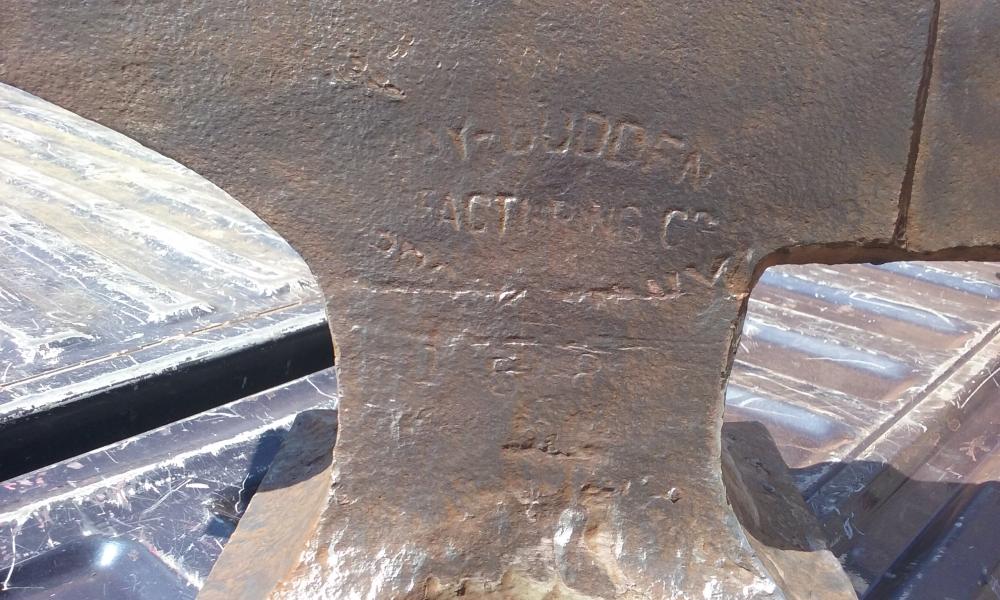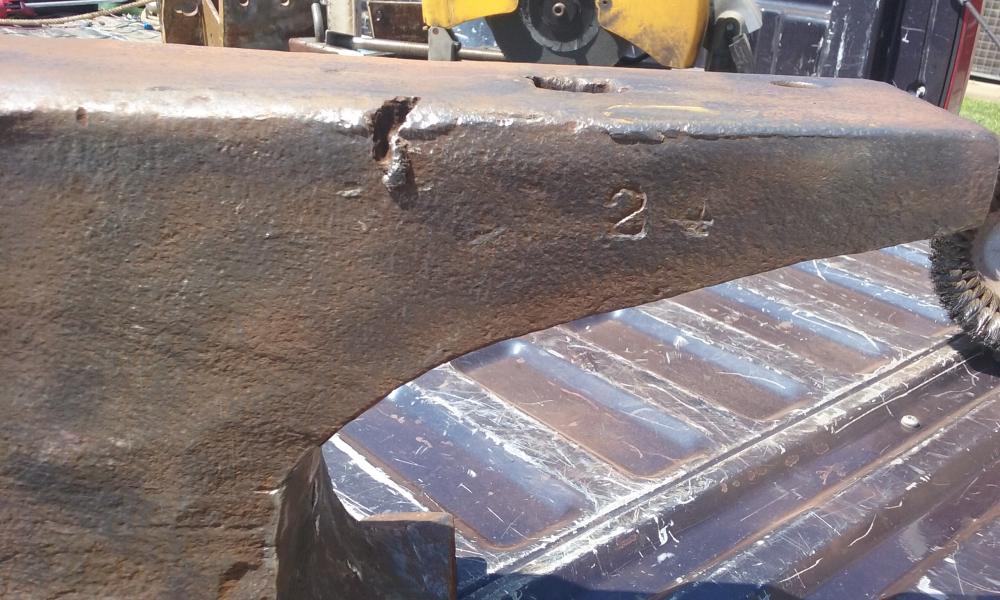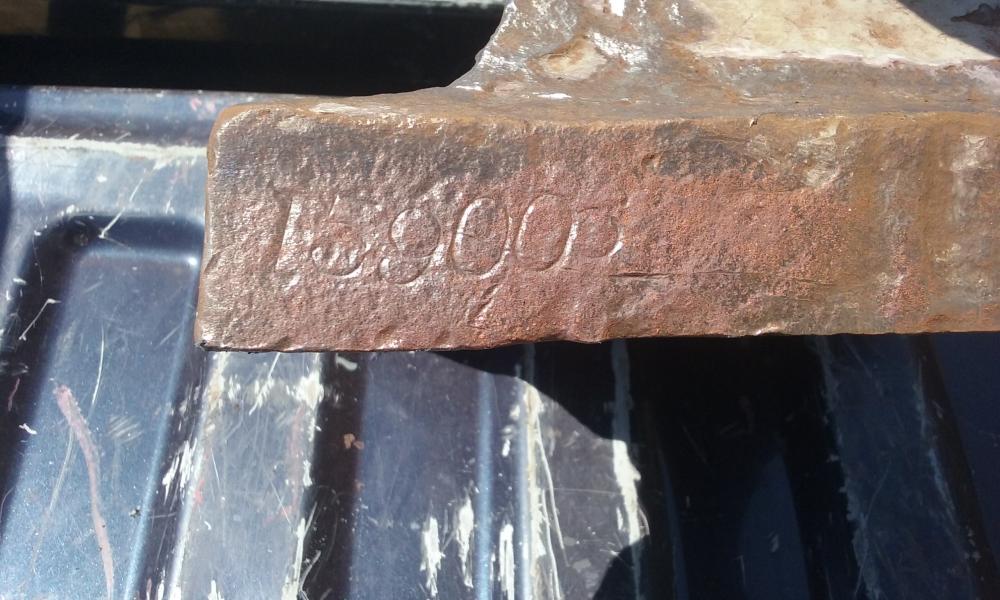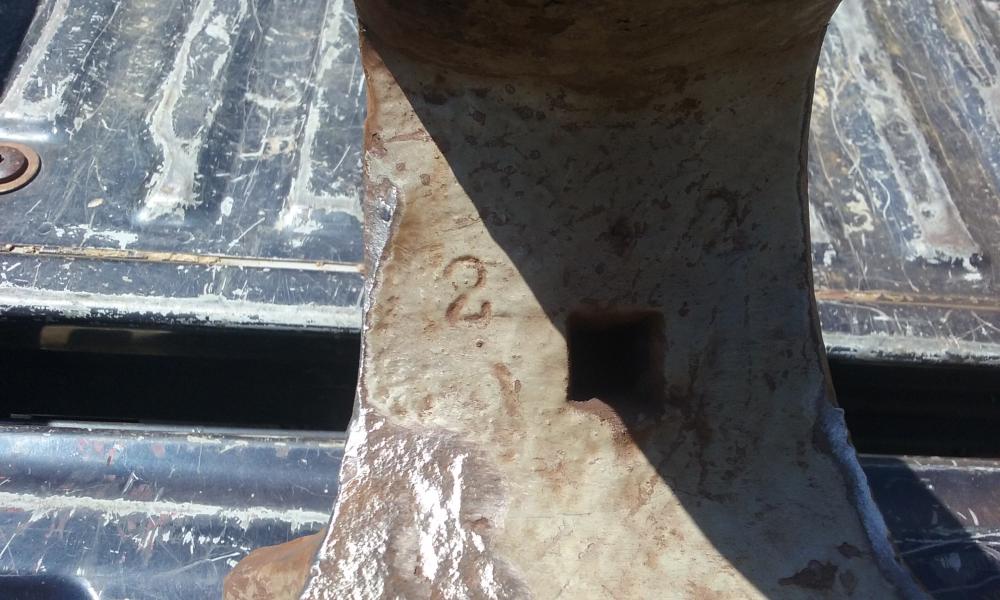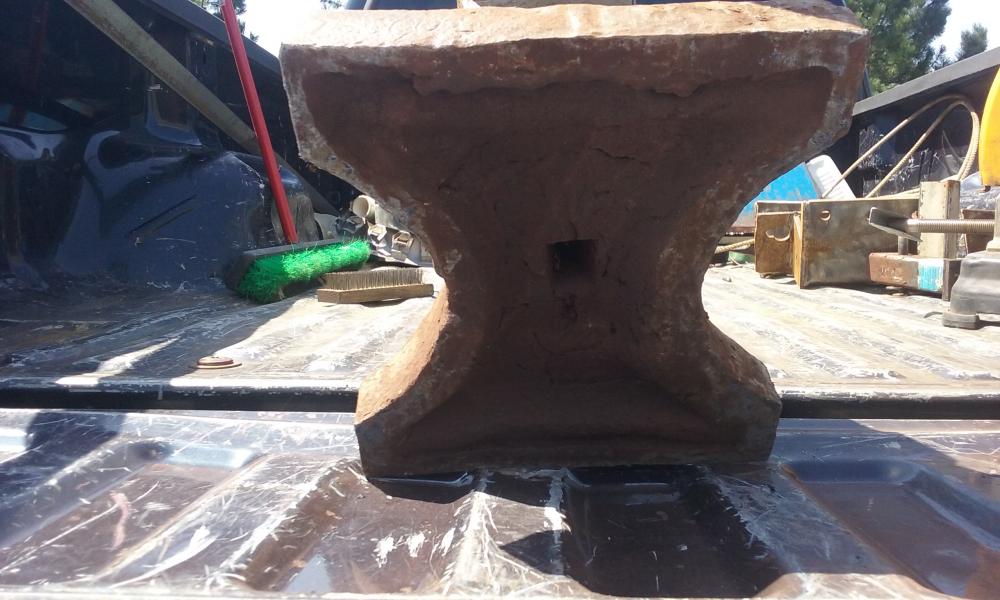-
Posts
13 -
Joined
-
Last visited
Profile Information
-
Gender
Male
-
Location
South Hutchinson, Kansas
-
That was my plan. I had a 12" x 12" x 96" piece of white oak I wanted the timber frame company next door to cut the end off of and then cut that into 2-6 x 12 x 24 pieces for another project. They cut the entire 96" piece in half . I'm wanting to put 2 pieces together and band them with 3 hand made bands after I glue and bolt them together.
-
I think I'm off on the SN. Maybe 15900(3)?
-
Got some more cleaning done with pictures. Under the name (1st pic) it appears to have '158' stamped in it. The rest of the numbers showed up fairly good in the rest of the pics. Now I'm off to decipher numbers.
-
Here's what I have figured out so far. It's a Hay Budden and the SN is 15900. I didn't get much in the way of cleaning done today, but will keep working at it.
-
Thank You. Iv'e got some 6" x 12" white oak I'm thinking about making a base out of.
-
Greetings everybody, I signed up here several years ago and haven't been involved much, but now I'm back. I got this at an auction yesterday. It is covered in several layers of paint that I'll be working to remove over the next few days. I have no idea what it is, yet. I have found a couple 2's stamped by the tong holes under the horn. These are the auction listing photos, I'll post more up as I get it cleaned up. A bit of history on this. This was the mechanic's anvil when I hired onto the fire department 23 years ago, I have no idea how long it has been here. I'd always hoped I'd get the chance to own it, now I do. It has been sitting in storage for several years and I never saw it get used much before that.
-
RKM556, How's the apprenticeship going? Chris
-
Better safe than sorry, or dead. Replace it with a good quality clamp. They do make a C clamp style ground, but those are generally used on high amperage machines. Clean attachment points as well as dressing up and shining up the copper lug on the ground will go a long way in making your work easier. Chris
-
I require materials to be paid upfront, or I won't take on the job. I have a very simple contract that states this. It also states money is due in relation to the amount of work done should you back out. None of this is refundable. You sign and date it, I sign and date it and give you a copy and put a copy in my file cabinet. It isn't full of legaleese junk, just the basics. I will build XX for you for $XX. It may not be legal if challenged, but I can tell some people think really hard about their projects before signing. So far, this has worked for me. Chris
-
Thanks Sam and Frosty! I'm happy to share what I know with whomever will listen. I have recently taken an interest in blacksmithing, and this seems to be one of the best sites I have looked into. I'd really like to add this craft into my welding business, but the more I read, the more I see there is to learn. Chris
-
IronWolf, 6010, 7018 and 11018 are my rod choices for steel repairs. I use the 11018 on the T-1 steels i.e. truck and trailer frames. It is just as easy to run as 7018, but formulated for the high strength steels. The first rod I learned on was 6010. You're right, it is a hard one to master, but if you can, you can run almost any other rod. Lincoln 5p+ and excalibur are what I buy. My Airgas rep gave me some buhler lo-hi to try. They restart a little easier than the excalibur rods do. I had a guy tell me to whip the cherry off the end of the 7018 as soon as you break the arc, this really makes restarts easier. For aluminum, I use Harris Alloy 26 rods. They take some getting used to, but are limited to thinner sections. I'd have to look at the hardfacing, cast iron, stainless and other rods I use before I put any numbers out there. I also use wire for steels, stainless and aluminum welding, mostly lincoln made products. Equipment list includes, 1965 red face sa-200 pipeline welder, a really old AC lincwelder 180 stick machine, an sp 175+ lincoln wire welder with 75/25 argon/co2 blend and a Hobart RC 256 welder with a Hobart 17 wire feeder. As soon as I get it back from the repair shop, it will be used for spray transfer .045" wire with 92/8 blend gas. Chris
-
Ryan, You have gotten some good advice here. I have been welding for close to 30 years now and I will leave you with a few thoughts. First, safety is paramount. Buy good quality personal protection equipment. I.E. gloves, pants, BOOTS (not tennis shoes), heavy cotton long sleeved shirt or leathers and cap. Above all, hearing and eye protection. Don't scrimp on these because once you injure your eyes and ears, they don't heal well. Second, a class at the local junior college or vo-tech is a great idea. At our local J.C., if you're not seeking a degree or certification, you can use their equipment, consumables, and materials for very little money to explore the welding world. Third, don't get hung up on one type of welding versus another. Every type has it's own pros and cons. Practice, practice, practice. Hood time is the best teacher. Learn all you can from whomever you can. I was fortunate enough to work beside a retired pipeline weldor for several years who taught me stuff you will not learn in school. Little tricks for this and that and those have helped me a lot. Enjoy your time behind the hood and be safe!!!! Chris
-

How do you pick and choose?
Chris Parsons replied to VaughnT's topic in Welding/Fab General Discussion
Pick up a copy of "New Lessons in Arc Welding." It is a very informative book. As a rig welder, I have used many different rods on many different types of steel, aluminum and stainless steel. If you have an AC/DC welder, get some 1/8" 6010 5P+ and some 1/8" 7018. Set your machine on DC REVERSE (DC+) and leave it. If you only have an AC welder, get some 6011 and 7018 AC rods. If you can master these 2 rods in all positions, you can run just about any rod you want. I have a helper who I am currently teaching to weld, and this book and these 2 rods have been all he uses and he is doing great. Just my $.02 worth. Chris

